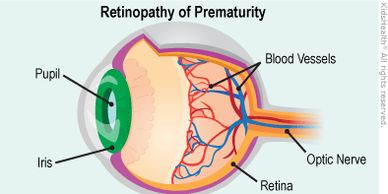Retinal disorders
What is Retina?
Retinal Vascular occlusions
Diabetic Retinopathy

The retina is a thin layer of tissue that lines the back of the eye on the inside. It is located near the optic nerve. The purpose of the retina is to receive light that the lens has focused, convert the light into neural signals, and send these signals on to the brain for visual recognition.
Diabetic Retinopathy
Retinal Vascular occlusions
Diabetic Retinopathy

Diabetic retinopathy is caused by damage to the blood vessels in the retina. Poorly controlled blood sugar is a risk factor.
Early symptoms include floaters, blurriness, dark areas of vision and difficulty perceiving colours.
Mild cases may be treated with careful diabetes management. Advanced cases may require intravitreal injections and laser.
Retinal Vascular occlusions
Retinal Vascular occlusions
Retinal Vascular occlusions

Retinal vein occlusion happens when a blood clot blocks the vein. Sometimes it happens because the veins of the eye are too narrow. Retinal artery occlusions although uncommon may also occur. They are more likely to occur in people with diabetes, and possibly high blood pressure, high cholesterol levels, or other health problems that affect blood flow. RVO associated with macular edema generally require treatment in the form of intravitreal injections.
Retinopathy of Prematurity
Age Related Macular Degenerations
Retinal Vascular occlusions

Retinopathy of prematurity (ROP) is a potentially blinding eye disorder that primarily affects premature infants weighing about 1250 grams or less that are born before 31 weeks of gestation. The smaller a baby is at birth, the more likely that baby is to develop ROP. This disorder — which usually develops in both eyes — is one of the most common causes of visual loss in childhood. Timely screening can prevent the progression of the disease.
Age Related Macular Degenerations
Age Related Macular Degenerations
Age Related Macular Degenerations

Macular degeneration causes loss in the centre of the field of vision. In dry macular degeneration, the centre of the retina deteriorates. With wet macular degeneration, leaky blood vessels grow under the retina. A special combination of vitamins and minerals (AREDS formula) may reduce disease progression. May require intravitreal injections as treatment.
Retinal Detachments
Age Related Macular Degenerations
Age Related Macular Degenerations

Retinal detachment is an emergency. Tissue at the back of the eye pulls away from a layer of blood vessels that provide necessary oxygen and nourishment.
The appearance of many floaters, sudden flashes of light or a shadow in the vision field are the common symptoms. Prompt treatment can often save vision in the eye.
Kushwaha Eye Hospital
Copyright © 2020 Kushwaha Eye Hospital - All Rights Reserved.
Powered by GoDaddy Website Builder